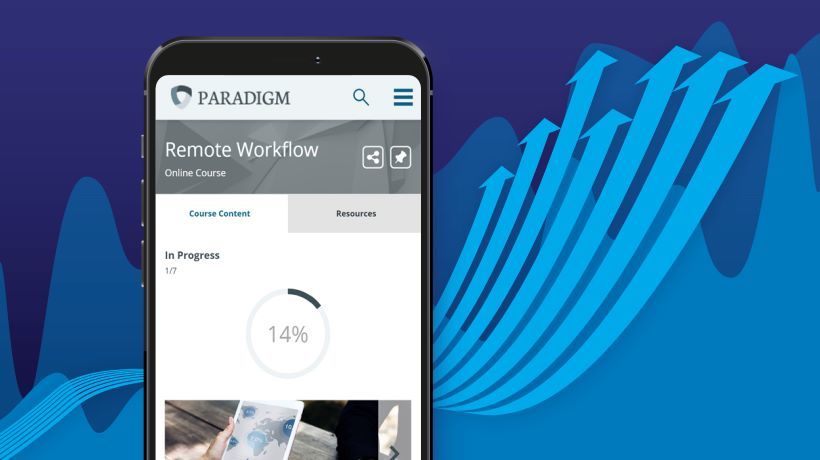Corporate eLearning For Future Employees: A Helpful Guide
This year, tech entrepreneur Elon Musk has launched his Neuralink project announcing his intention of cyber-enhancing the human brain. Though there will probably be more than 25 years until we start integrating computers into our bodies, digital devices have already become our extension. According to a Global Web Index Report, the average consumer owns 3.64 connected gadgets. And these items are accompanying people at work, to an already digitalized and ever-changing environment.
The eLearning market is expected to gain even more ground and become more diversified in the next 4 years. A Technavio report, released in 2016, estimates that the worldwide eLearning market will reach over $31 Billion by 2020. Companies use eLearning not only to teach technical or safety procedures but also to perform soft skill training.
Research analysts divide the eLearning market into 3 major categories: Τechnology, content, and services. Content is considered the leading contributor, but the technology eLearning sector is expected to grow the most in the next 4 years. In terms of services, eLearning vendors are connecting with their customers to understand what type of hardware and software solutions they need to provide in accordance with emerging training trends.
Adapting To The Digital Natives
The 3 generations who will be dominating the workforce soon—X, Y, and Z—are all very different from each other, especially regarding their views about career goals and work-life balance.
Millennials have grown up experiencing fast-pacing technological advancements and have tested new hardware and software, but Gen Zers came directly in contact with touch screens and high-performing affordable devices. They use 5 of them daily, but they prefer smartphones. Their choice of favorite social media apps also differs from those of Millennials, according to this Vision Critical study.
First of all, websites need to be created with special attention to the mobile user. Young employees will also value connectivity, and a seamless multi-channel, multi-platform experience. Learning content can come in the form of a mobile app, and notifications can remind employees of their training – employees of tomorrow are more likely to check a chat message received through a push notification, according to this Forbes SXSW Stats from 2016.
Because they spend a lot of time online from a very young age, students are cyber-savvy and expect high-quality content. Gen-Z is keen on creating content and curating available resources for others: a Wikia and Ipsos MediaCT study states that 64% of 1200 Gen Z respondents said: "They contribute to websites because they like learning about new things". Therefore, eLearning for future workers needs to be enhanced with immersive storytelling and expressive imagery.
Speaking The Gen-Z Language
Another thing we can learn from adolescents’ online time, but also from their social media preferences, is that technology has changed the way people express themselves. Teens prefer to communicate through visual language, in the form of emoticons, images, and videos and they are avid video consumers, watching up to 3 hours of video content per day.
Further on, information has to be segmented in short batches, to match their attention span. Social media is already adapting to their tastes: Snapchat and Instagram stories, vines, embedded YouTube commercials have last less than 10 seconds. Written information needs to be turned into graphics, tutorials, and instructional videos, which recreate real-life scenarios. Post-Millennials have a wide variety of content available, and they will pick only what’s relevant.
Moreover, because they value "real people", mentorship programs which use a company’s seniors might work better than investing in dedicated materials from industry gurus. These infographics show that generations X, Y, and Z have very different sets of skills, qualifications, and career motivations, so facilitating contact between generations will benefit both experienced employees and juniors. This goal can also be achieved through social media integration into the learning process. Online groups and forums, that link employees with different career levels are a great way to share experiences, ask questions and debate daily challenges.
Trends In eLearning Innovation
Even if your digital learning process is mobile-optimized, it might not be just Gen Z-optimized. But using mobile microlearning could be the solution. Microlearning is gaining ground as a training method in the corporate medium and consists of delivering short lessons, which focus on developing a certain skill. Some corporate eLearning vendors are already successful in creating efficient microlearning tools for different businesses.
For example, Grovo, a young company, developed video lessons for employees of Magellan Health, who showed no interest in the company’s learning platform, which was accessed by only 80 of 6,900 workers. The video training made digital attendance escalate to 80% and some employees are taking more lessons than assigned, according to Grovo’s own study case.
Gamification of the corporate learning process is another rising trend, especially in the retail industry. The first part of this study case piece shows how safety practice theory turned into 3-5 minutes quest games in the retail industry has greatly improved retention. Axonify developed online game learning sessions for employees of Walmart, Bloomingdale, and At Home, which highly improved participation rates and minimized drastically work accidents.
At Home, they chose to gamify a large range of training concerning customer service, compliance, leadership, and onboarding and the process had notable results, which you can find here.
Another approach to effective learning is developing Virtual Reality trainings, a technology that greatly helps industries where work circumstances are hard to duplicate for exercises. Not only bound to advertising and video gaming, VR offers the opportunity for simulations with complete narration immersion and engaging visual content, but implementing it on high-scale is still expensive. However, until iGeners start working, VR is expected to become affordable and future learners will be virtually trained to deal with any work-related situation.
Understanding The Career Values Of The Youngest
According to Adecco Group North America, youngsters value growth opportunities and fulfilling work more than flexible schedules and high salaries.Generation Z seems to be made of career idealists, who worry about their student debt but are determined to pursue their dream job rather than financial success.
Emerging employees can feel trapped if their career path is traced by the company, so they should be allowed to explore different departments, access lessons outside their current job needs, and experience job shifting to understand the responsibilities of others in order to finally choose the best option for them.
Today’s students are part of a generation of content creators and influencers, so they should be involved in designing the learning process. 60% of 1200 Gen Z respondents said they enjoy sharing knowledge with others online.
Surveys, pools, and the possibility of rating their training are all important instruments to make future employees feel valued and implicated in designing their own work environment. Integrating feedback elements in apps and games is easy. Furthermore, making new employees take part early on in training others or contributing to training materials with their creative skill set and self-trained capabilities will also make them feel more appreciated.
All things considered, the business environment will have to deal soon with 3 very different generations dominating the office space and corporate training tools need to become flexible and intuitive enough to meet this new challenge. This Fortune article cites various studies and reports showing that employers rate retention as a top priority for their organization. Thinking training with the characteristics of new generations in mind will help companies score higher retainment rates among new employees, a much-needed improvement in the modern corporate world.









